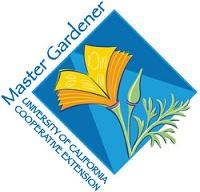
University of California
UC Master Gardener Program of Sonoma County
Heirloom Tomatoes
Heirloom vegetables, and tomatoes in particular, have become a hot topic among gardeners and chefs alike. But what exactly is an heirloom tomato and why are they so highly prized and widely grown in home gardens?
What Is an Heirloom?
- The scientific definition of an heirloom is an open-pollinated variety; that is, the flower is pollinated with pollen from another plant to make a fruit with seeds that can reproduce the fruit, true to type.
- Growers can save seed from their crop and sow again in following years and plants will produce fruit with the same characteristics and quality of the parent. As seeds are passed down from gardener to gardener over time, they become heirlooms.
- Unscientifically speaking, it could be said that an heirloom tomato is one produced the old-fashioned way. Varieties that were distinguished by their superior flavor, appearance, or hardiness were nurtured and saved, to be passed along from one generation to the next.
- Some experts describe different categories and classifications of heirlooms. Some seed companies have tried to create definitions based on date, such as anything older than 50 years. Some say a variety must be at least a century old to qualify as an heirloom, and others accept a variety as an heirloom if it has passed down through three generations.
- What is most commonly recognized is that heirloom tomatoes are varieties that have a history in a family or achieved a measure of local or regional fame. Many are immigrants, cherished varieties that were brought to America by early settlers.
- The preservation of these seeds was not particularly sentimental, but they became time-tested varieties bearing an implicit seal of approval because farmers and gardeners would not have bothered to save seed of inferior tasting or poorly performing strains. Heirlooms represent, quite literally, the interwoven fabric of both natural and human history.
Heirlooms Today
- Thanks to home gardeners and farmers markets, heirlooms continue to be not only preserved, but also now widely available in seed packets and starts at nurseries. Seed companies are specializing in heirloom varieties and chefs are featuring heirlooms on menus.
- Most importantly, conservation organizations worldwide are saving diverse but endangered varieties and educating people about the value of genetic and cultural diversity by collecting and sharing heirloom seeds. America is one of the richest depositories of heirloom vegetables.
- Appearing in all shapes, sizes, colors and flavors, charmingly named, poetically described and offering opportunities to explore a plethora of varieties and culinary preparations, it is no wonder heirlooms are wildly popular.
Heirloom Selections
There is an increasing selection of heirloom tomatoes to choose from at nurseries today. Listed below are some local favorites:
- ‘Aunt Ruby’s German Green’ is an indeterminate, late-season, large, green, beefsteak type, especially appreciated for a spicy and sweet flavor when perfectly ripe.
- ‘Black from Tula’ is an indeterminate, midseason tomato from the Ukraine. Though moderate in yield, it is considered one of the best tasting and largest of the ‘black’ tomatoes.
- ‘Brandywine’ is an indeterminate late season tomato, an old Amish reddish pink variety that has the reputation for setting the standard for tomato flavor. There is also a midseason ‘Red’, a late season ‘Yellow’ and a very popular delicious ‘Black Brandywine.’
- ‘Cherokee Purple’ is an indeterminate, midseason tomato, sometimes called a black tomato, noted for exceptional, rich, smoky flavor.
- ‘Druzba’ is an indeterminate, late midseason tomato from Bulgaria (the word “druzhba” means friendship) with deep red globes, and high yield. It is widely adapted for growth in most parts of the U.S and considered a virtually problem-free garden performer. It is one of the finest heirlooms available with superb taste.
- ‘Glacier’ is a determinate, early season variety that sets well in cold weather, and has bright red fruits with good flavor.
- ‘Green Zebra' is an indeterminate, midseason tomato, having slightly elongated, beautiful golden green globes with dark green, zebra-like stripes and described as sweet and tangy.
- ‘Stupice’ is an indeterminate, early to midseason, cold-tolerant tomato from Czechoslovakia, and has intense red fruit produced in clusters with full tomato flavor.
- ‘Tangella’ is an indeterminate, midseason variety from England with vibrant orange globes borne in abundance, known for intense, tart flavor.
- ‘Yellow Pear’ is an indeterminate, midseason, productive, small pear-shaped tomato with sweet and mild tomato flavor.
Additional Information
April 2022







